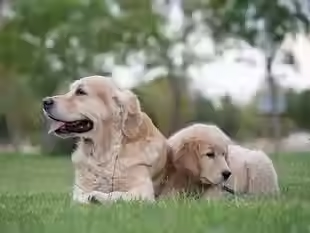

Why Your Dog Struggles More at Home Than in Training Sessions
May 24
2 min read
1
24
0

Many owners are surprised when their dog behaves beautifully during a lesson - only to fall apart the moment they get home. It can feel frustrating, even discouraging, but the truth is: this is completely normal.
At Perspective K9, we see it all the time. Dogs perform well with a trainer or in neutral environments, but when placed back into their familiar space, everything seems to unravel. Here’s why it happens - and what to do about it.
1. The Environment Carries Meaning
Dogs don’t generalize like humans do. They associate specific behaviors with specific environments. That means:
Sit might mean “sit” at the training facility,
But at home, “sit” might mean “I don’t have to if the TV’s on and I’m on the couch.”
Home environments are full of pre-loaded habits, and dogs tend to default to what’s always been allowed unless new structure is introduced consistently.
2. Handler Habits Are Different
Let’s be honest: you handle your dog differently than a trainer does - and that’s okay! The goal isn’t to become a professional dog trainer, but to learn to match structure and follow-through at a level your dog understands.
If you’re unclear, inconsistent, or overly casual at home, your dog will pick up on that quickly. Training isn’t just about the dog - it’s a reflection of the relationship between dog and handler.
3. Distractions Are Familiar and Unfiltered
Your dog may be more distracted at home not because it’s harder, but because it’s more comfortable. They’re more likely to test boundaries when they feel secure in a space they know.
This is especially true with puppies or dogs who’ve been allowed free roam or loose structure. The more familiar the environment, the more room they feel they have to negotiate.
What You Can Do About It
Practice training drills at home the same way you would in a session - leash on, markers, structure, and calm tone.
Reintroduce structure in casual moments: crate time, leash indoors, asking for behaviors before rewards.
Control the environment until the behavior is solid. Don’t expect your dog to succeed around every distraction without reps in a controlled setup.
Stay consistent with your markers, corrections, and follow-through. Training doesn’t stop at the facility door.
Final Thoughts
If your dog is struggling at home, it doesn’t mean they haven’t learned - it means they’re still learning how to apply those skills in real-world, everyday life. That’s a normal and necessary part of the training process.
We’re here to guide both dogs and owners through that transition. If you’re stuck, frustrated, or ready to take the next step in your dog’s training journey, we’re ready to help.
Contact us to learn more about private sessions or continued support after Board & Train!





